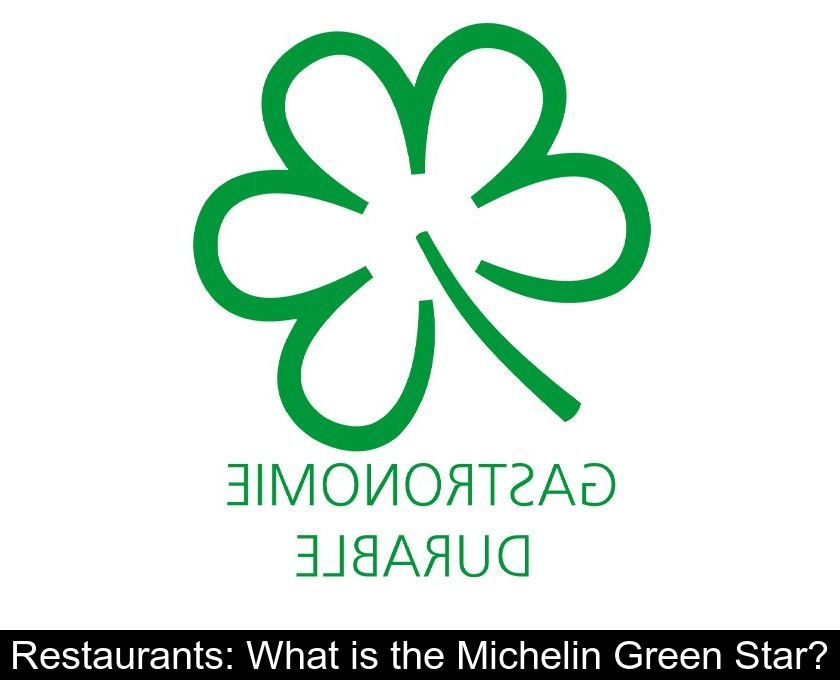Restaurants: What Is The Michelin Green Star?
Perhaps you are not yet familiar with the green Michelin star as it is the most recent distinction in the famous red guide. It has only been three years since the Michelin guide rewards restaurants committed to an ecological and sustainable approach. We invite you to discover the history and significance of this highly coveted new star.
What is a green Michelin star?
The green Michelin star is the latest distinction from the famous red guide. It stands out from other stars not only because of its color but also, and above all, because of its eco-responsible commitment.
This distinction can be awarded to any type of establishment recommended by the Michelin guide and rewards professionals in the restaurant industry for their ecological approach and their commitment to sustainable and eco-responsible gastronomy.
Unlike the other Michelin stars, it not only signals excellence in cuisine but also the way gastronomy is approached and the desire to evolve this industry.
Note: This committed star does not replace the stars traditionally awarded by the red guide (1, 2 or 3 stars), but it can be added to them.
When was this distinction created?
The green Michelin star was launched in 2020, during the presentation of the Michelin France guide. It is now present in all selections of the guide.
This new distinction was created following field observations by Michelin guide inspectors.
Its objectives are to serve as a source of inspiration and reference for consumers and professionals. It aims to encourage initiatives in favor of sustainable development in the gastronomy world and to promote the growing mobilization of actors in this sector.
How to obtain the Michelin green star?
All restaurants featured in the Michelin Guide selections are eligible for this distinction, whether they already have a culinary distinction such as a Michelin star or Bib Gourmand or not.
To hope to achieve the coveted green Michelin star, restaurateurs must multiply initiatives in favor of the environment.
This distinction rewards diverse eco-responsible initiatives that have the potential to make a difference in favor of a more sustainable gastronomy, for example:
• attention to the origin of products, such as local products from short supply chains or products from wild harvesting
• respect for the land and animals
• respect for seasonality
• the presence of a vegetable garden or orchard on the premises
• the composition and balance of menus
• waste management and restaurant resources
• energy self-sufficiency of the establishment
• the ability of teams to raise awareness among customers about the restaurant's sustainable approach
• the restaurant's contribution to the local economy.
Please note: the examples listed above are just an illustration of what is possible! In fact, there are no fixed criteria or foolproof recipe for obtaining the precious ecological star.
Through this award, the Michelin Guide wishes above all to highlight the most remarkable commitments and practices and encourage the creativity that restaurateurs demonstrate in practicing a more eco-responsible gastronomy.
What are the new Michelin-starred sustainable gastronomy restaurants?
In 2023, out of over 15,000 restaurants recommended by the Michelin Guide, only a little over 450 establishments have been awarded a Green Michelin star worldwide. The tourist guide reserves this distinction for the most committed establishments that serve as pioneers and role models within their destination.
You can find the restaurants that have received this committed star in the print guides, on the website, and on the Michelin mobile applications.
The 2023 rankings were unveiled on March 6th. The 114th edition of the Michelin Guide awarded its Green Star to 8 restaurants in France.
The newly awarded restaurants are:
• Christophe Dufossé, chef of the Château de Beaulieu restaurant in Busnes, Pas-de-Calais
• Benoît Witz, chef of the Jardin Secret in Cotignac, Var
• Chef Cybèle Idelot of the Ruche restaurant located in the Haute Vallée de Chevreuse, Yvelines
• Chef Romain Meder of Les Chemins - Domaine de Primard restaurant in Guainville, Eure-et-Loir
• Villa Pinewood in Payrin-Augmontel, Tarn
• Chefs James Henry and Shaun Kelly of the Le Doyenné restaurant in Saint-Vrain (91)
• David Degoursy and Jeanne Satori of the de:ja restaurant in Strasbourg
• Chef Florian Descours of the La Bòria restaurant in Veyras, Ardèche











